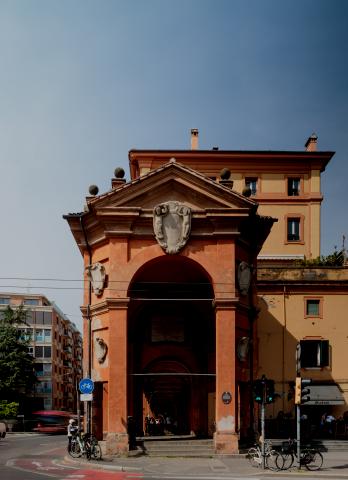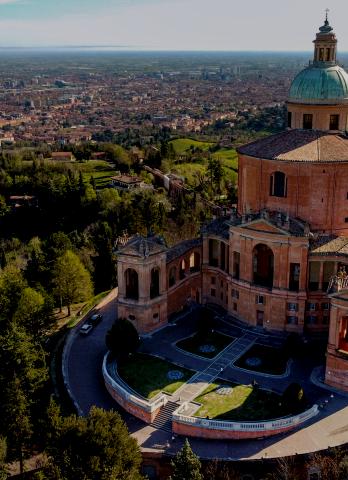San Luca

The portico of San Luca is an excellent example of the devotional “covered walkway” built in Italy in the baroque period. This component starts in the city and ends at the Sanctuary of the Madonna di San Luca, which was the end of the pilgrimage route: a porticoed uphill road, punctuated by chapels dedicated to the Mysteries of the Rosary, which connects the city walls to the suburban church.
Completed in the first half of the 18th century, it is the longest portico ever built, and has performed its civil and religious purpose continuously for more than three centuries. Additionally, in recent years, the portico, with its distinctive linear character, is frequently used for people who like jogging and walking, and who appreciate the possibility of exercising and walking also in bad weather.

Point of interest

Bonaccorsi Arch

Portico of San Luca

Meloncello Arch

Beata Vergine di San Luca Basilica and Sanctuary
Check out the contributions related to this component
Correspondence between architecture and way of life
“In Bologna, instead of architectural uniformity, we see prevalently fluid urban development and every architectural entity is an expression of it. This urban unity is evident not only in the layout of the city fabric, but also in the uniformity of the building material: a terracotta that partakes of the blazing sun of the Emilian plain and the porticoes that give the city its university-like air and its great charm.
The porticoes are ubiquitous; they form an open-air interior and reveal a backdrop of civility. And not only do they link each house to the next but also the house to the street, bridging the almost inevitable divide between private and public life. They also redress a problem typical of modern town planning by creating safe pedestrian walkways. In keeping with Bologna's spider's web-like urbanistic development and in synchrony with the character of its inhabitants, the porticoes culminated splendidly in the 18th century with that of San Luca, “a great architectural artefact, made part of nature with scenographic prowess, for the civil benefit of the entire population” as Bacchelli says.
It is a commonplace notion to say that cities are a reflection of their inhabitants; in this sense, then, Bologna does not exhibit any divides between structures and customs, between surface dressing and ways of life, or between the “faces” of stone and the faces of men. The porticoes, the wide-open spaces, the colour and the city layout, which underlie its urbanistic development, and the politicised and civilised, cordial men with a taste for life, result in admirable coherence”.
Pierluigi Giordani, Coerenza fra strutture e costume, in “Tuttitalia. Enciclopedia dell’Italia antica e moderna”, fasc. 3, 15 febbraio 1961, Firenze-Novara, p. 96.
